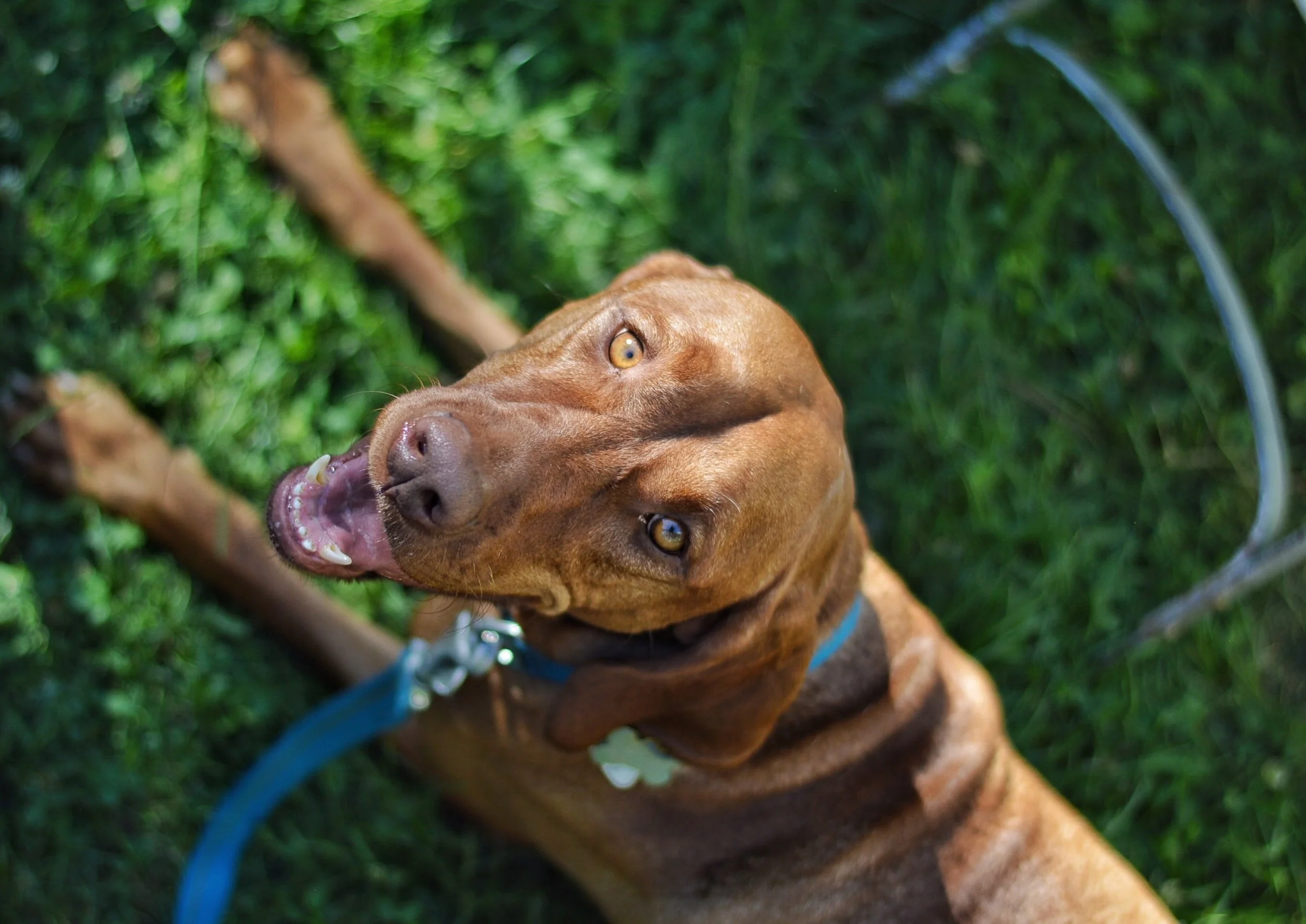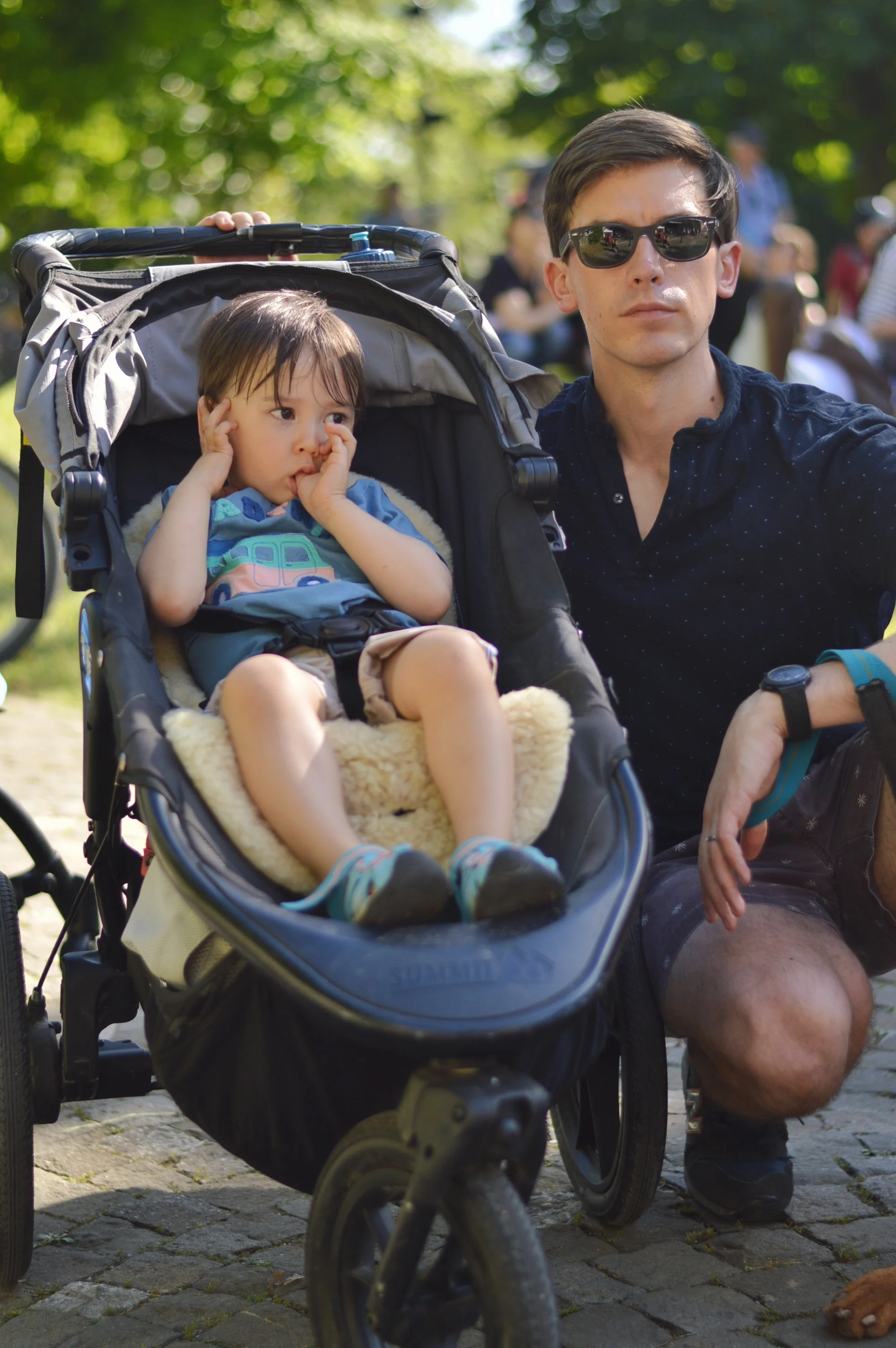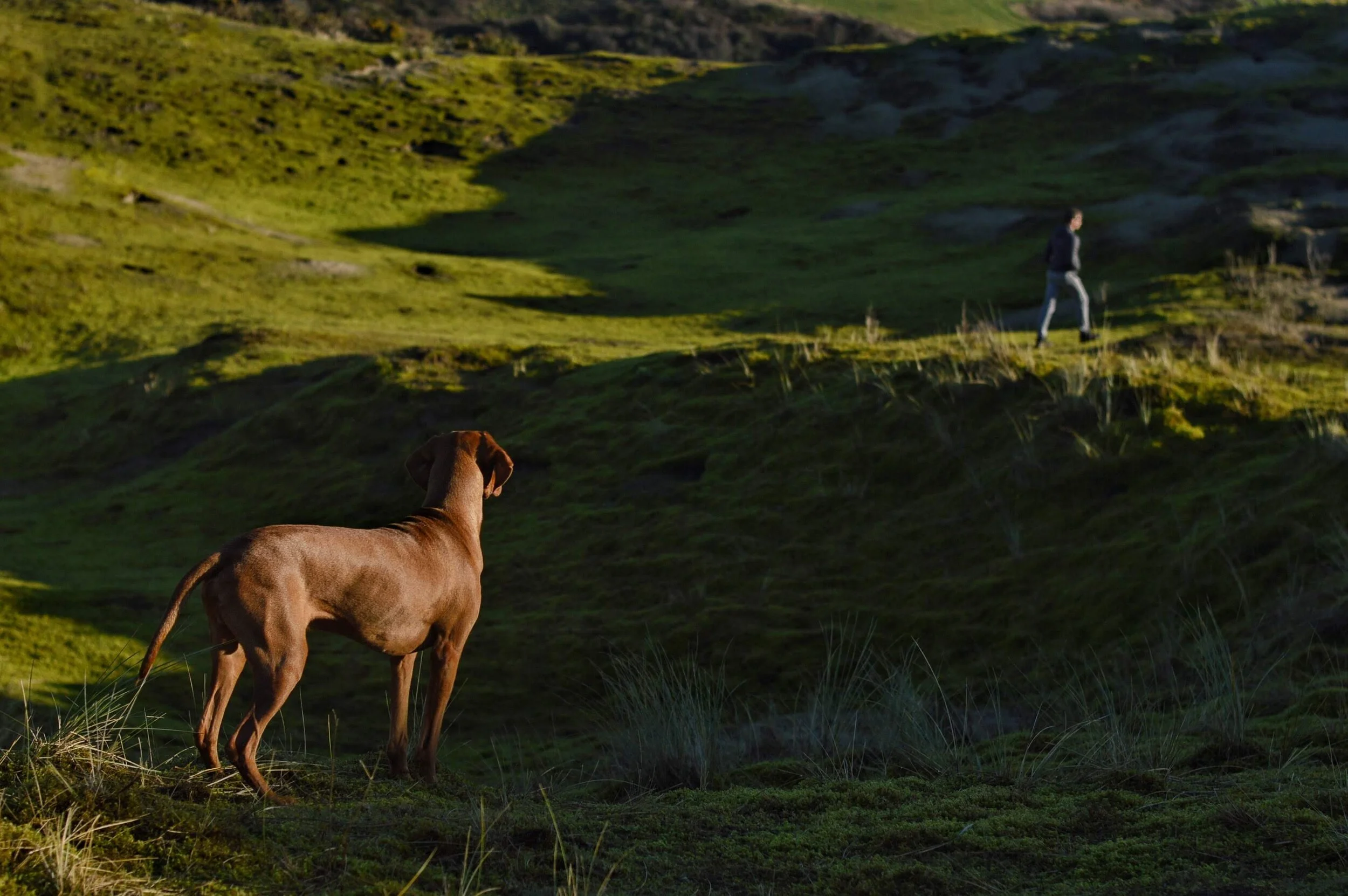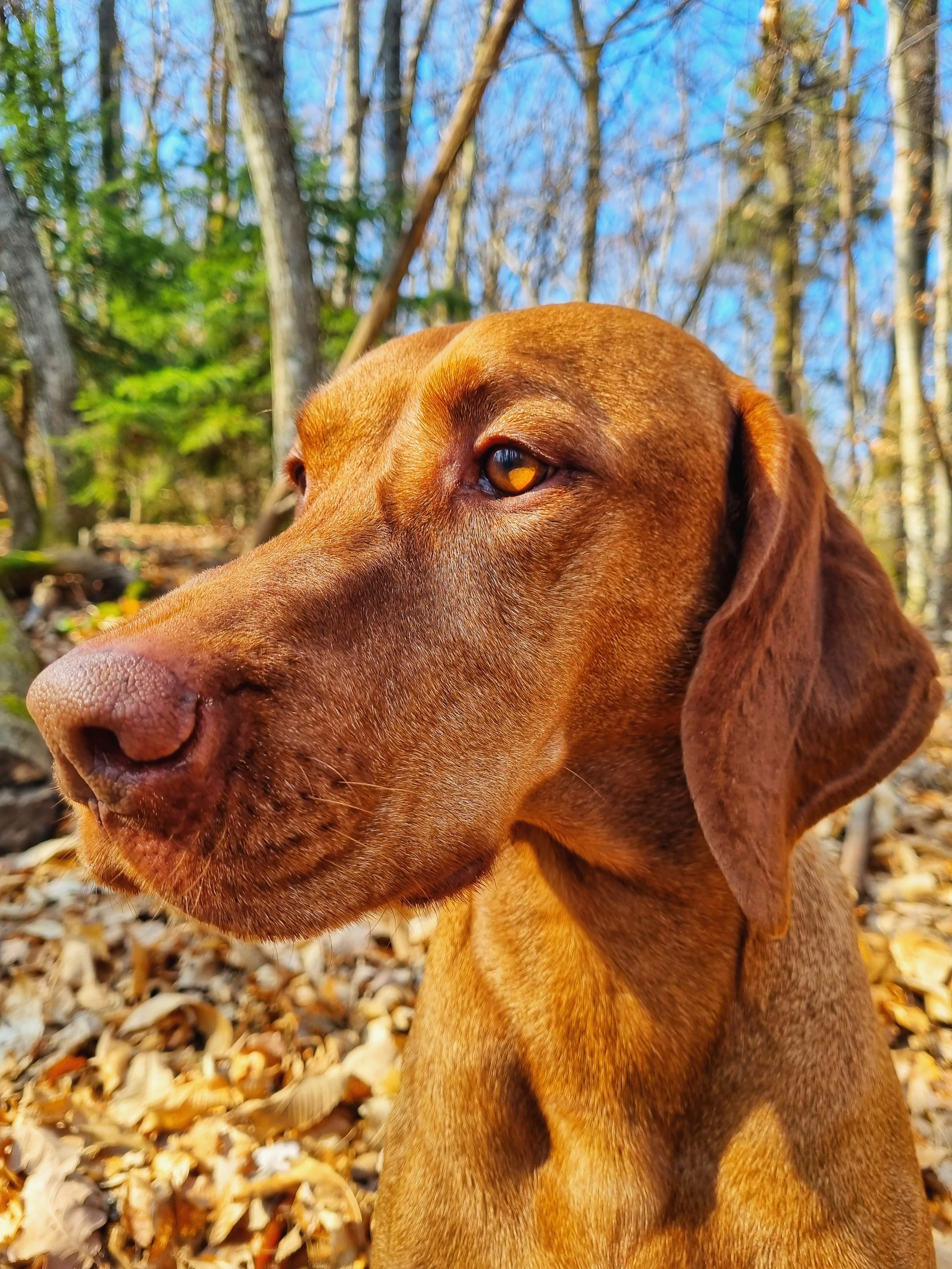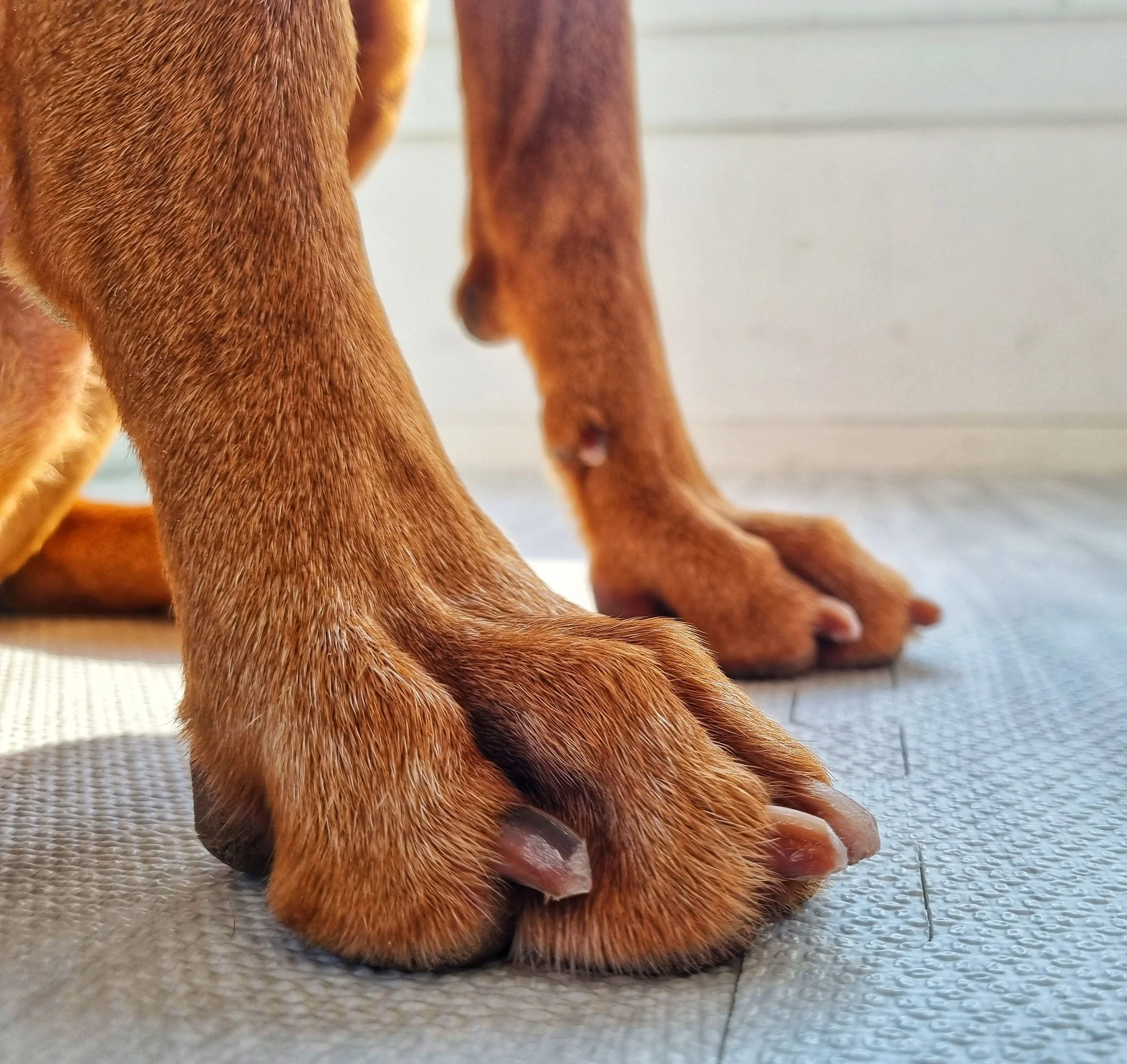Useful things to teach your dog
I thought I would share a post with you regarding commands that I use to manage Luka when out hiking or simply out on a walk in town with or without the kids in tow. There are a number of things that you don’t learn at dog school, but I think should be on your radar to make both your life easier, and allow your dog more freedom to enjoy himself! My intention here was not to go through every single command that Luka knows, but rather highlight the ones that I think are most useful for a family dog who likes to hike!
How to train a dog
Before I go into the specific commands that Luka knows, I want to write briefly about training dogs in general. This applies to anything your dog learns, so the same framework is applied to every command I mention below.
I should point out that I am not a professional dog trainer. I am only sharing with you what I have learnt through working with professionals and reading and watching videos published by professionals. If your dog has a specific behavioural problem, then I advise you to seek help from a professional dog trainer, preferably one that uses positive methods. I know of a few in the Geneva area, so I am happy to make recommendations if you need one.
Dogs learn by doing whatever behaviour that will get them the reward that they want. Once they figure out what behaviour they need to exhibit in order to get the reward that they want, and they consistently get rewarded for said behaviour, they will repeat it. (This applies to desired and undesired behaviour!)
When training a dog in a new command/behaviour, these are the stages you need to go through in order to get a dog that will do what you say, whenever you say it, where ever you say it.
Stage 1: Shaping
Lure with a treat or toy or hand gesture to get the dog to do the behaviour you want and once they do the behaviour, mark the behaviour and reward immediately
Stage 2: Pairing
Once your dog is reliably doing the behaviour you want with a lure (treat or toy or hand gesture), associate a verbal command (or gesture/whistle pattern) so it associates the cue with a particular behaviour
Stage 3: Teaching
Your dog now knows what a particular cue means, and will perform the behaviour on command
Stage 4: Proofing
Your dog can perform said behaviour in any situation, regardless of the 3 D’s (Distraction, Duration, Distance)
Stage 5: Maintaining
Ensuring your dog will continue to perform, every time, over time. For me, maintaining simply means treating occasionally for a command that your dog performs, in order to reinforce the obedience and keep him motivated to perform.
I use the stages above from Pippa Mattinson’s teachings, you can see more details about each of the stages and how you can do them yourself on her website.
The key point to note is to train your dog using positive reinforcement. In order to be able to do this, you need to establish a clear way of communicating with your dog when he does something you like. For this, you can use a marker word, like “Yes” or “Good”. Alternatively you can use a clicker which is a tool that makes a clicking sound. Whatever marker you use, in the beginning stages it’s important to follow the marker with a treat. I used to watch a lot of videos by Zak George, who publishes excellent short videos on all sorts of things you can teach your dog. You can check out his video on clicker training here.
I never punish Luka when he does something wrong. Rather I redirect or change the environment for him to be able to do what I ask of him. I do, however, say “No” (Ok, sometimes I shout “NO!”) to let him know that is not what I want him to do. I never EVER hit him, or anything else physically punitive though he does try my patience at times!!!
Arguably the hardest part of getting a really obedient dog is the Proofing stage. Just because your dog knows how to sit when you’re at home with no distractions doesn’t mean he can do it when guests arrive, or you’re at a dog park. Dogs do not generalise their learning, so your challenge with proofing is to take your dog and Teach them in many different circumstances so he can perform what you want of him in any situation.
I think most dog owners will agree that their dog will come when called, until there’s something more interesting! That could be all manner of things from other dogs, cats, squirrels, people with food, interesting smells, you name it! In proofing Luka’s recall, the long line is my best friend and I still use it with him from time to time to keep him sharp. Proofing stage requires you to not let your dog fail, so work with a long line on your dog, or in enclosed areas so they can’t just run off and do what they like.
…Enough of that! What can Luka do?
I’ll share with you the commands that Luka knows that I consider relevant for families who like to hike or often walking in town with or without children.
Recall
This is an absolute must for any dog that you want to be able to walk off the lead in any setting, whether in town or in nature.
I use both a verbal command and whistle for Luka’s recall. In most circumstances, calling his name and saying “Come” is enough to call him back, however if he doesn’t appear to be listening or already in pursuit of something, I use an ACME gun dog whistle and this sound carries much better, particularly if he’s running or there’s wind. I follow the traditional Gun Dog Training cues so do short bursts bip-bip-bip on the whistle. If I do use the whistle, which is not very often, I always reward with my highest value treat (dehydrated liver or boiled chicken meat), or jackpot treat (lots and lots of treats) if I don’t have high value treats on me. This keeps the whistle recall bombproof and so far I’ve not had a situation where he won’t come back to the whistle.
Proofing Luka’s recall has been the hardest thing I’ve had to undertake, and I’ve worked on it constantly since he was a 9 week old puppy, taking him to all sorts of places just to work on recall. The most recent intensive “Recall” proofing session I did with him was around one year ago when he was 3 years old when I got sick of him ignoring me when he would see other big dogs and would not come back when called. He would go up to the dog to say hi before coming back to me and this was not good enough! So I put him on a long line. I was prepared to do this for as long as I needed to proof his recall but in the end, I only needed to do it for a week. He didn’t have a single walk in that time where he had free run. This meant I didn’t give him any chances to ignore me and run off. But it paid off and he quickly understood that he had to come back, regardless of what was in front of him!
This of course becomes extremely important when you are walking in nature as you may come across wildlife, and you do not want to lose your dog or your dog get injured because he didn’t come back when called. Of course, this is not something you can proof easily, unless you live in an area where there are lots of animals running around, so your best bet is to work on self-control so your dog doesn’t just give into his impulses to chase. A good example of teaching your dog impulse control can be found in this video by Zak George.
One tip I would share is to teach your dog to stay with you when called until you release him. This means ideally your dog should come back to you and sit next to you, or at least stop and look at you. He should not run off again until you release him otherwise you’ll just end up with a dog that will do Drive-By’s and you can’t necessarily catch them if you need to.
A video on how to train your dog to come when called can be found here.
Leave It
This is also a very useful and important command for dogs who are often out or living with children. I use the Leave It command to stop Luka from touching, eating, going up to anything including people, dogs, food, children, etc.
Leave It is great to stop your dog from taking food off your children, or going up to other dogs. When my babies are very young, I don’t like him to lick them, so I use the Leave It command to stop him from doing so.
This command is also useful when feeding your child, who depending on age will inevitably (and maybe deliberately) throw food on the floor. For example my son loves grapes, but they are toxic to dogs, so if Luka looks like he’s going in to pick up food that’s ended up on the floor, I can tell him to leave it and I can pick up the grapes before he does. There are a number of human foods that are toxic to dogs such as chocolate, raisins, grapes, onions and lastly xylitol; which is often found in peanut butter, chewing gum, sweets and jams. So this will mean that you can keep your dog safe by stopping it from eating foods it should not be eating. You may also wish for your dog not to be eating any human food, so this will be an important command for you if you have a little human living with you!
To be honest I use this command so much that half that time I wonder if he thinks his name is “Leave it”! But I do find it useful to stop him from picking up food on the street (not totally proofed, admittedly) or from going up to other dogs where he risks pulling me and the pram with him.
Don’t hurt the baby Blue Tit Luka, “Leave it!”
This is equally as difficult to Proof as the recall, mainly because a dog will naturally want to eat/lick/go up to things or people that have peaked their interest. Again, a lead or a long line is my best friend here.
Find a video on how to teach Leave it here.
Heel
One of the doggy school favourites, but for good reason. Luka is a bit of a nightmare on the lead when he’s excited, so I don’t necessarily expect him to heel to me the whole time, I just look for a loose lead. However, if we are passing another dog or people, I tend to ask him to heel so he knows he should stay next to me, until I release him. His release word is “OK”.
I don’t ask him to heel on a particular side, so for me he can heel which ever side he happens to be on at the time the command is given. You might prefer your dog to always heel on one side of you.
If I do need him to be on a particular side of me, then I simply give him the left/right command which I talk about later.
Video on how to teach your dog to heel here.
Stop
This is a regular command I use whether in the countryside or in town. As the command suggests, when I say Stop, Luka stays in the spot until I release him. This is useful for when runners or cyclists are passing, or if I see there is a road up ahead and I don’t want him to cross until I’ve been able to check there are no cars coming. The most important thing about this command is that your dog does not move again until you give a release command.
Using a long line and having a strong marker will teach your dog stop quite quickly. Using a marker is crucial, because you might be a small distance away from your dog at the time you give the command, which means you can’t treat immediately. You still need to be able to communicate with your dog the precise moment that he stops that you liked what he did, then follow with a treat a little later once you catch up to him.
It’s worth working on this one, it could save your dog’s life!
Left/Right
Doggy schools don’t teach you this, however as a mum who is often carrying my child or pushing a pram, this command is an extremely useful one. I taught Luka to walk on my left or right on command, so that I don’t have to pull him by the collar or lead every time. The reason that this is particularly useful is because if you have your hands full with pushing pram, trying to tend to your child or carrying other things, you can simply give your dog a command to go on a certain side of you without physically having to make your dog move.
I use this multiple times daily because as we live in the centre of town, we are inevitably walking on pavements which are oftentimes narrow. If we pass another dog or child, I will tell Luka to walk on the other side of me so that when we pass others, Luka is furthest away from them. This also means he is less likely to pull me to go say hi to a dog or scare a child by walking too close.
It’s also very easy to train if your dog understands hand lure gestures well i.e. can follow your hand with a treat in it. You simply get the dog to follow your hand to get him on your left/right then follow the training steps of associating a cue, teaching, proofing, etc.
I highly recommend you teach your dog this, it’s been a game-changer for me!
I like to work on Luka’s impulse control when we go to farms or places where there are animals he’s not used to by asking him to focus on me even if there are distractions, like rabbits!
Paw/High Five
All dog owners will know that annoying thing that happens when your dog walks over his lead and it gets trapped under his chest. It becomes annoying when you are carrying your child so getting down to untangle your dog suddenly becomes a “thing”. So in these situations I simply ask Luka to “Paw” and I just need to swing the lead out from underneath him. No need for bending down. Hurray!!
If you happen to be reading this and thinking “well I never have that problem because I use a retractable lead”, all I would say is retractable leads can be extremely dangerous to both your dog and yourself, as well as others. I never recommend the use of retractable leads and would urge you to reconsider using these if you are a current user of one. More about why retractable leads shouldn’t be used in this link to an article written by Dr Karen Becker, a vet based in the USA.
Staying on a path
This is a command that’s used when walking in the countryside, off the lead. You might be walking through a thick forest where you could easily lose sight of your dog, or walking next to a field with livestock and you don't want your dog to go into the field. (Or your dog is already in said field and you want him to stay on the path)
Luka was taught this command quite young, and understands the command as “Chemin”, the French word for path. It’s a nice way to keep a control of your dog without having to call him back to you each time.
I taught him this command by calling his name when he wandered off a path, then when he reacted to his name and the moment he steps onto the path, (and also when he just happened to step onto the path) I marked and then treated. As per the training framework, you start fairly quickly onto associating a cue and then do this enough times in different situations and your dog should understand the concept.
Walking behind you
This is a command that’s frequently used when we are hiking on narrow single tracks. If I can’t see well ahead of me, or if I see other hikers coming towards us, I ask Luka to “Follow” so that he stays behind me and not getting himself in a situation where he might cause someone to lose their footing or scare them in any way.
This is easy to teach with a hand lure with a treat. The treat in your hand simply keeps the dog behind you and you release a treat regularly to keep him in position. You can move onto associating a cue quickly with this one. If your dog moves ahead of you, you stop and get him back into position before moving again (because the stopping will cause frustration in your dog so this is a negative reinforcement)
For now I hope that gives you some fun things to work on with your dog to make your outings even more enjoyable! A good dog is a dog that is allowed more freedom to explore the world safely!
What commands have you taught your dog that you’ve found useful?
